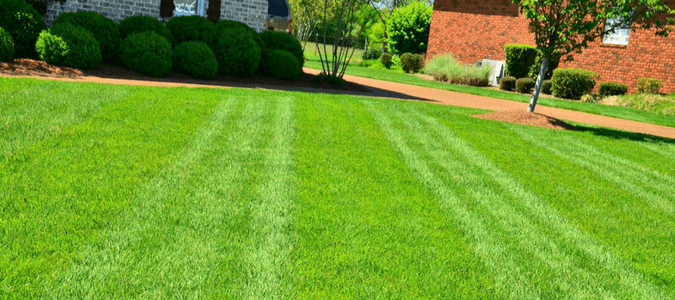
Keeping your grass green and healthy can be a struggle in parts of the country which regularly experience drought. In these regions, there may be only small fluctuations in climate between seasons, and the summer months can be extremely hot. While the mostly steady climate is reliable and livable for residents, months of dry, rainless days can be taxing on your lawn and garden.
How to Grow a Drought Tolerant Lawn
For homeowners looking for ways to grow a more drought tolerant lawn, there is hope. Read below to learn what you can do to improve your lawn’s resistance to drought.
Water Effectively
It may seem counterintuitive, but overwatering your lawn can do more harm than good for your grass and plants. Watering your lawn several times a week—something many homeowners do—can prevent your lawn’s roots from growing deeper in the soil. In other words, overwatered roots only grow a few inches into the soil. The result is an inability for the roots to find water that’s deeper in the soil during dry months.
To encourage a deeper root system, water your lawn less frequently. You may be surprised to learn that it’s best to water your lawn when 30 to 50 percent of your outdoor area displays one of the three wilt signs. These indications of a parched landscape include folding leaf blades, grayish coloring, and footprints marked in the grass. When you notice these indicators, apply just enough moisture to water the roots without drowning your lawn.
Only water your lawn again after noticing any of these indications that your lawn does actually need additional moisture.
Choose the Right Grass
Another way to help ensure a drought resistant yard is by selecting the right grass and plants for your lawn. Choose native species that are already accustomed to certain climates and longer periods without water and the types of vegetation which will require less overall maintenance.
A few grass species that will endure dryer months in Bexar County and central and southern parts of Texas include:
- Emerald Zoysia grass
- El Toro & Jamur Zoysia grass
- St. Augustine grass
- Buffalo grass
- Hybrid Bermudagrass
For areas outside of Texas, the Native Plants Database is a great resource to find what will thrive in your particular environment.
Just like selecting the right grass can improve your lawn’s tolerance to droughts, choosing the right plants can do the same.
Pay Attention to Grass Height
Proper mowing height is essential to growing a drought tolerant yard. Correct mowing habits promote deep root growth and increase the grass’s density.
The frequency and height at which you will need to mow your lawn will depend on the grass you select. A good rule of thumb, though, is that species with fine-textured leaf blades can be mowed shorter compared than those with coarser leaf blades.
Select The Best Fertilizer
The right fertilizer can go a long way if you’re trying to cultivate a drought tolerant lawn. If you want to nurture your outdoor space to withstand extreme heat with infrequent rainfall, we recommend selecting an organic fertilizer. Not only are these products safer for the environment and your family, but organic fertilizers also offer a slow release of nutrients. Even in times of drought, organic fertilizers release the nutrients your lawn needs to help survive periods of little to no rain.
Another benefit of organic fertilizers is that they improve your soil’s ability to retain water. These fertilizers add organic matter and, as a result, your lawn will be stronger and more tolerant to times of drought.
Choose ABC for Top Quality Lawn Services
Here at ABC Home & Commercial Services, we’re dedicated to providing our customers with quality lawn services, using the best products on the market. That’s why our lawn care specialists use organic fertilizers. They are safe for the environment and also benefit your lawn in many ways.
When it comes to lawn fertilization, choose ABC.